Did you know over 72% of consumers look for sustainable health products? Yet, only a few can spot eco-friendly ingredients on labels. This shows a big gap in what people want and what they can find.
As we focus more on being green, knowing what’s eco-friendly is key. We need to look at labels, certifications, and how ingredients affect the environment. This way, we can choose products that are good for us and the planet.
Let’s explore how to find eco-friendly ingredients in health products. We want to make sure our choices really support sustainability.
Understanding Eco-Friendly Ingredients
To understand eco-friendly ingredients, we look at their whole life cycle. This includes how they are sourced and if they can easily break down. Eco-friendly ingredients come from renewable resources, which means they can be replenished naturally.
They are often made using methods that don’t harm the environment. This makes them better for our planet.
What Defines Eco-Friendly?
Eco-friendly ingredients have a small impact on our ecosystem. They are often organic, grown without harmful chemicals. This helps keep the soil and wildlife healthy.
These ingredients also break down naturally, without polluting our water or harming sea life. This makes them perfect for green beauty and health products.
| Eco-Friendly Traits | Description |
|---|---|
| Renewable Resources | Ingredients sourced from natural, continuously replenished sources. |
| Biodegradability | Capable of breaking down naturally without environmental harm. |
| Low Environmental Impact | Minimal damage caused during extraction, manufacturing, and disposal. |
The Importance of Sustainability
Sustainability is key when using eco-friendly ingredients. It helps keep our health products’ environmental impact low. Sustainable products aim to protect biodiversity.
By choosing these products, we help the planet. We reduce waste and use materials that can be replenished. This way, our beauty routines don’t harm the environment.
Common Eco-Friendly Ingredients to Look For
Looking for natural skincare and sustainable health products is key. Knowing eco-friendly ingredients is important. They’re good for our skin and the planet. Let’s explore some common eco-friendly elements that make a big difference.
Natural Oils and Extracts
Natural oils and extracts are at the heart of clean beauty. They come from plants and are full of antioxidants, vitamins, and fatty acids. For example, coconut oil, jojoba oil, and almond oil moisturize and heal.
Plant extracts like chamomile, rosemary, and tea tree oil fight inflammation and bacteria. They’re perfect for natural skincare.
Plant-Based Surfactants
Plant-based surfactants are a gentle alternative to harsh ones. They’re made from coconut or corn glucose. They clean the skin well without taking away its natural oils.
Products with these ingredients are mild and safe. They’re a top choice in clean beauty.
Organic Certifications
Organic certifications are key to knowing if skincare products are good. Certifications from USDA Organic and Ecocert mean the products meet high standards. They show the products are free from harmful stuff.
Seeing these labels means the products are pure and eco-friendly. It shows the brand cares about the planet. We should look for these labels to support green brands.
| Certification Body | Criteria | Benefits |
|---|---|---|
| USDA Organic | 100% organic ingredients, no synthetic additives | Assurance of purity and sustainability |
| Ecocert | Natural and organic cosmetics certification | Guaranteed minimal environmental impact |
| Soil Association | Stringent organic farming and processing standards | High organic content with ethical sourcing |
Knowing about these certifications and ingredients helps us choose better. It lets us support brands that really care about clean beauty.
Reading Product Labels
Reading product labels can be tough, mainly because of fake eco-friendly claims. Knowing key terms and spotting misleading info helps us choose better. This way, we pick natural health remedies and green health products wisely.
Key Terms to Search For
When checking labels, look for certain words. Terms like “organic,” “biodegradable,” “non-toxic,” and “free from harmful chemicals” are good starts. Make sure these claims are backed by real certifications, like USDA Organic or Ecocert.
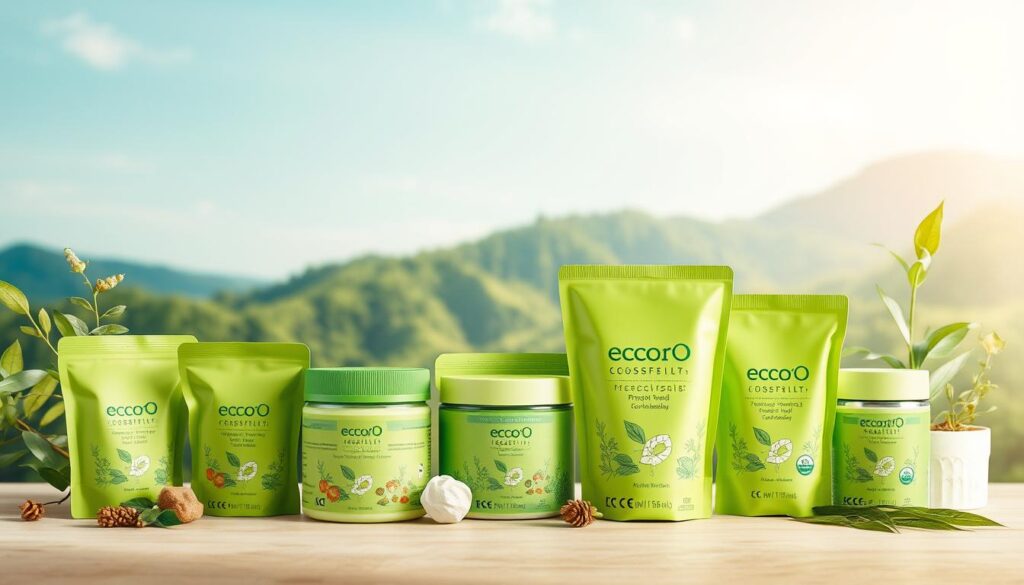
Avoiding Greenwashing
Choosing green health products can be tricky because of greenwashing. This is when brands exaggerate their eco-friendliness. To dodge these tricks, look for clear Eco-Friendly Ingredients lists and third-party certifications. Real eco-friendly brands show their sustainable efforts with solid data and certifications.
Terms like “Eco-Friendly Ingredients” and “green” are often used too loosely. Always check if these claims are supported by specific details about the ingredients’ source and processing.
By being alert and informed about these issues, we can make eco-conscious choices. This ensures our picks for natural health remedies and green health products are good for the planet.
| Key Term | Description |
|---|---|
| Organic | Certified as organic by recognized bodies such as USDA Organic. |
| Biodegradable | Capable of breaking down naturally without harming the environment. |
| Non-toxic | Free from ingredients that are known to be harmful to humans and the environment. |
| Certified | Verified by third-party organizations for eco-friendliness and safety. |
The Role of Certifications in Eco-Friendliness
Certifications are key in our quest for eco-friendly living. They ensure health products meet high ecological and sustainability standards. These labels help us make better choices by showing trust and transparency.
Organic Certification Bodies
Organic certifications help us spot true sustainable health products. Bodies like the USDA Organic, EcoCert, and Soil Association check products. They make sure products are free from harmful chemicals and GMOs.
Choosing products with these labels means we support eco-friendly values.
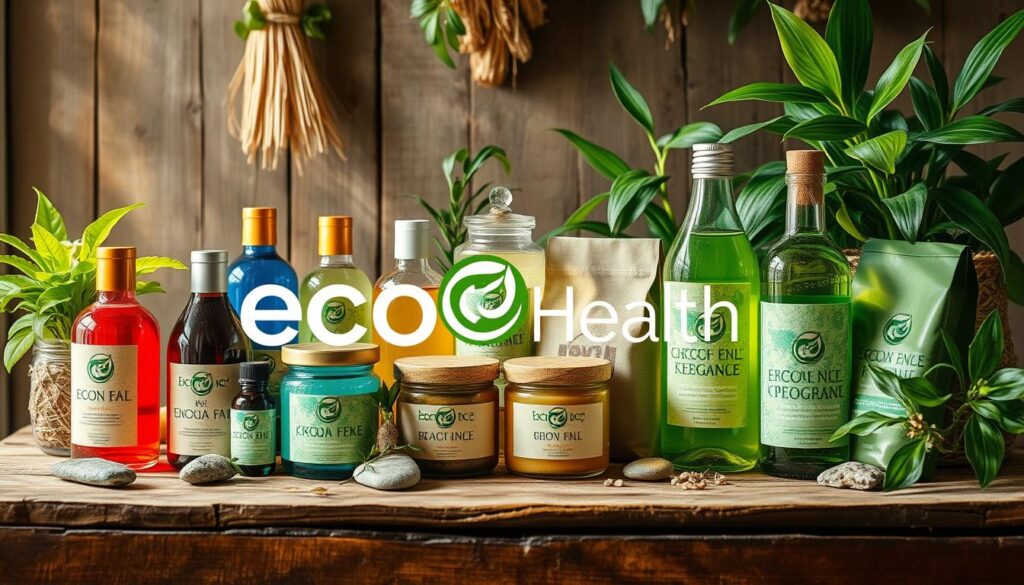
Third-party Verified Labels
Third-party labels add an extra check. They show an independent group has checked the product’s claims. Famous third-party certifiers include NSF International, Green Seal, and Underwriters Laboratories (UL).
These labels mean products have been checked for sustainability. They build trust with consumers.
The Impact of Synthetic Ingredients
Looking into eco-friendly beauty products, we must talk about the bad effects of synthetic stuff. These effects are on our health and the planet. Knowing which chemicals to steer clear of helps us choose better for our bodies and the earth.
Harmful Chemicals to Avoid
Many beauty products use synthetic ingredients that are risky. Here are some big concerns:
- Parabens: These preservatives mess with hormones and might cause cancer.
- Phthalates: Found in scents, they harm reproductive health and aquatic life.
- Sulphates: Good at cleaning, but harsh on skin and hair.
- Triclosan: An antibacterial that messes with thyroid function and leads to antibiotic resistance.
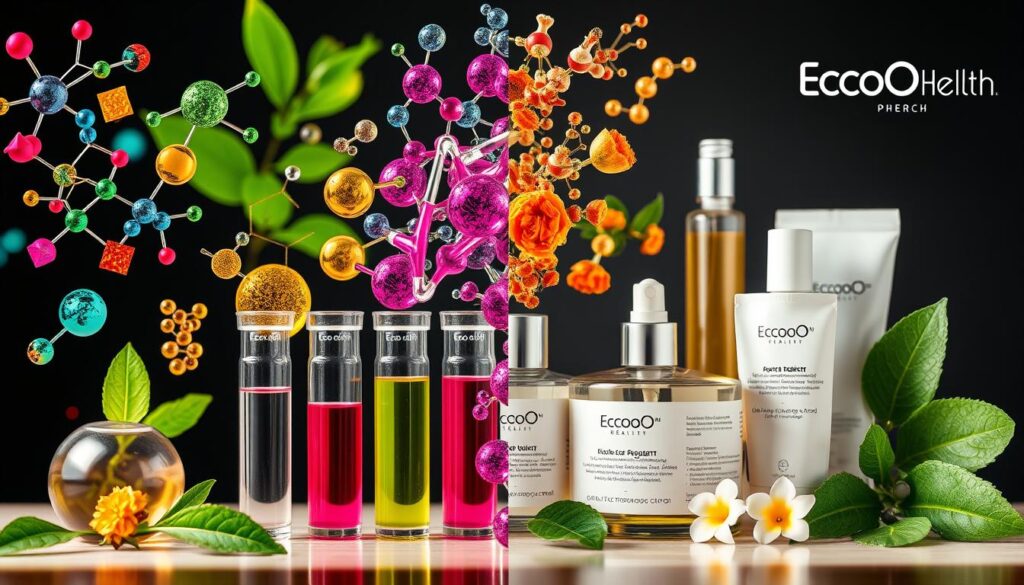
Benefits of Choosing Natural
Choosing natural over synthetic has many perks. Natural stuff breaks down easily, so it doesn’t pollute. It’s also gentler on skin, reducing irritation and allergic reactions.
Natural products are full of good stuff like vitamins and antioxidants. Aloe vera and chamomile calm the skin. Jojoba and argan oils moisturize without clogging pores.
Going natural is good for us and the planet. It’s about choosing wellness that cares for our bodies and the environment.
Recognizing Ethical Brands
When we choose health products, picking ethical brands is key. These brands care about where they get their ingredients and how they treat people and the planet. Our choices can really make a difference.
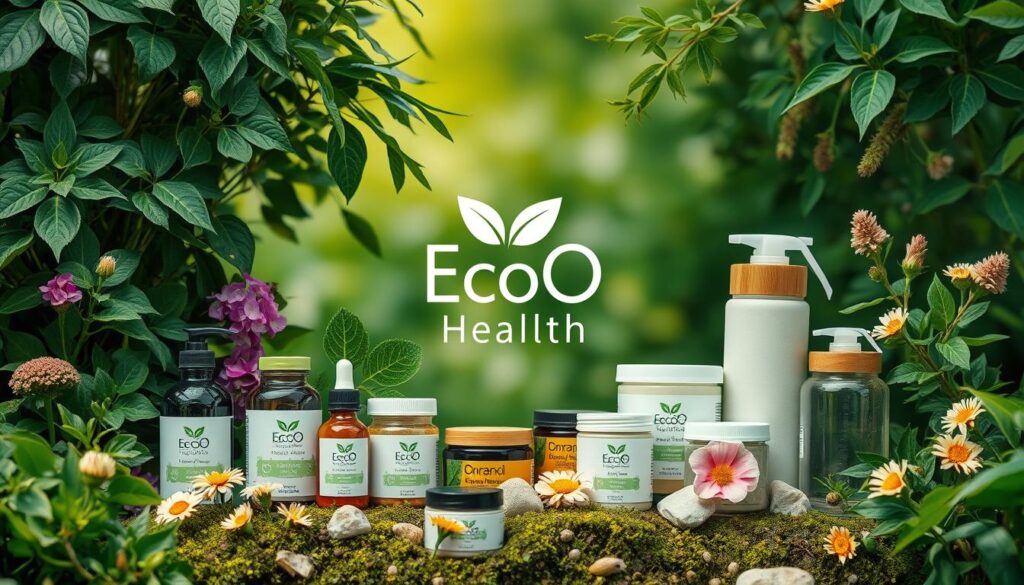
Transparency in Sourcing
Transparency means we know where and how ingredients are found. Brands like Patagonia and Lush are leaders because they share their supply chain details. This builds trust and shows they’re honest.
- Patagonia: Known for its dedication to sustainable sourcing, from organic cotton to recycled materials.
- Lush: Offers detailed reports on ingredient sourcing, ensuring minimal environmental impact.
Social Responsibility
Brands that care about social issues help communities and support fair trade. Companies like Ben & Jerry’s and TOMS have big social plans. They do more than just make products; they help solve big problems.
| Brand | Social Responsibility Initiatives |
|---|---|
| Ben & Jerry’s | Advocates for climate justice and fair wages in their supply chain. |
| TOMS | Known for their One for One® model, providing shoes and clean water to communities in need. |
In conclusion, choosing ethical brands helps the planet and people. By picking brands that are open about their sources and care about society, we make a positive impact. Let’s choose wisely and show our values through our purchases.
Consumer Awareness and Responsibility
Exploring eco-friendly health products shows us the key role of consumer awareness. We can’t just wait for producers to make things right. We must take action as informed buyers.
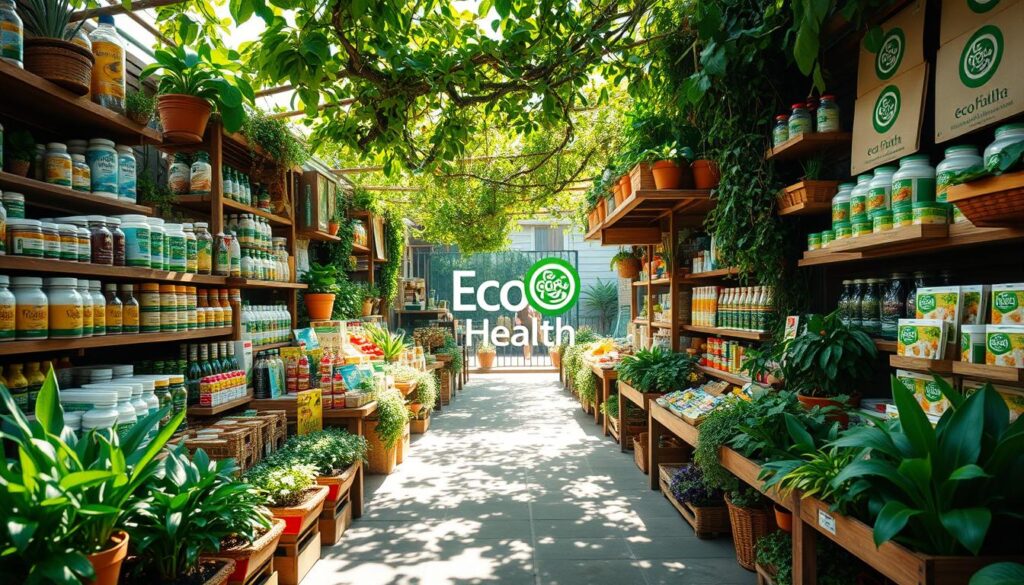
The Importance of Research
The importance of research is huge. By doing our own research, we learn about the ingredients and making of products we use every day. This helps us spot true eco-friendly products from those that just pretend to be.
Resources for Informed Choices
For smart choices, we need good resources. Here are some top tools and platforms to help:
- Environmental Working Group (EWG): Gives detailed ratings on the green and health impact of many products.
- Think Dirty: A mobile app that tells us about ingredients and rates products for cleaner living.
- GoodGuide: A big source that scores products on health, environment, and social issues.
- Leaping Bunny Program: Helps find products that are kind to animals, for ethical beauty.
Using these resources boosts our awareness and helps us make better choices. Together, we push the market towards greener and more responsible products.
Trends in Eco-Friendly Ingredients Health Products
Looking into eco-friendly health products, we see a big change. People now want products that are safe and natural. This shift is making the market change a lot.
Rise of Clean Beauty
Clean beauty is more than a trend; it’s a big movement. It’s all about being open and choosing health over everything else. Brands like Tata Harper and Drunk Elephant use fewer chemicals and more natural stuff.
They avoid things like parabens and synthetic smells. This shows how much people want safe and green beauty products.
Innovation in Sustainable Practices
New ways of making eco-friendly products are coming up. Companies are using less waste and shipping in ways that don’t harm the planet. Lush and Ethique are at the forefront with products that don’t need plastic.
They’re also using biotech to make Eco-Friendly Ingredients that are like natural ones but better. This helps save resources and keeps products working well.
These changes show us moving towards cleaner and greener beauty. It’s a big change towards a more aware and caring market.
Making Eco-Friendly Choices in Our Purchases
We don’t need to change everything at once to live more sustainably. Small steps can lead to big changes. By choosing eco-friendly products, we help both ourselves and the planet.
Starting Small with Our Routine
Switching to eco-friendly items is easy. Start with things you use every day like toiletries and cleaning supplies. For example, try bamboo toothbrushes or reusable beeswax wraps instead of plastic.
These changes are simple and can make a big difference. They help us move towards a greener lifestyle.
Supporting Local and Eco-Conscious Brands
Buying from local brands is another great way to help the environment for Eco-Friendly Ingredients. It cuts down on shipping and supports our community. Plus, eco-friendly brands often make products responsibly.
Shopping at local markets or eco-friendly stores helps our planet. It’s a way to make a positive impact with our choices.
In conclusion, choosing eco-friendly products and supporting local brands is good for the planet and our economy. Let’s make a difference, one purchase at a time.
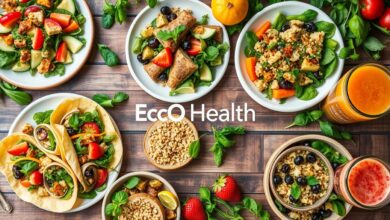
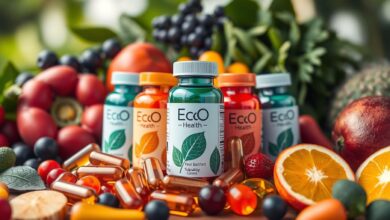
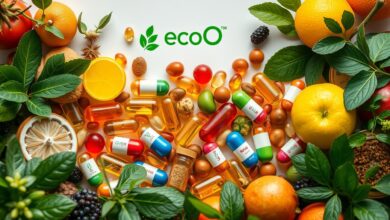


One Comment